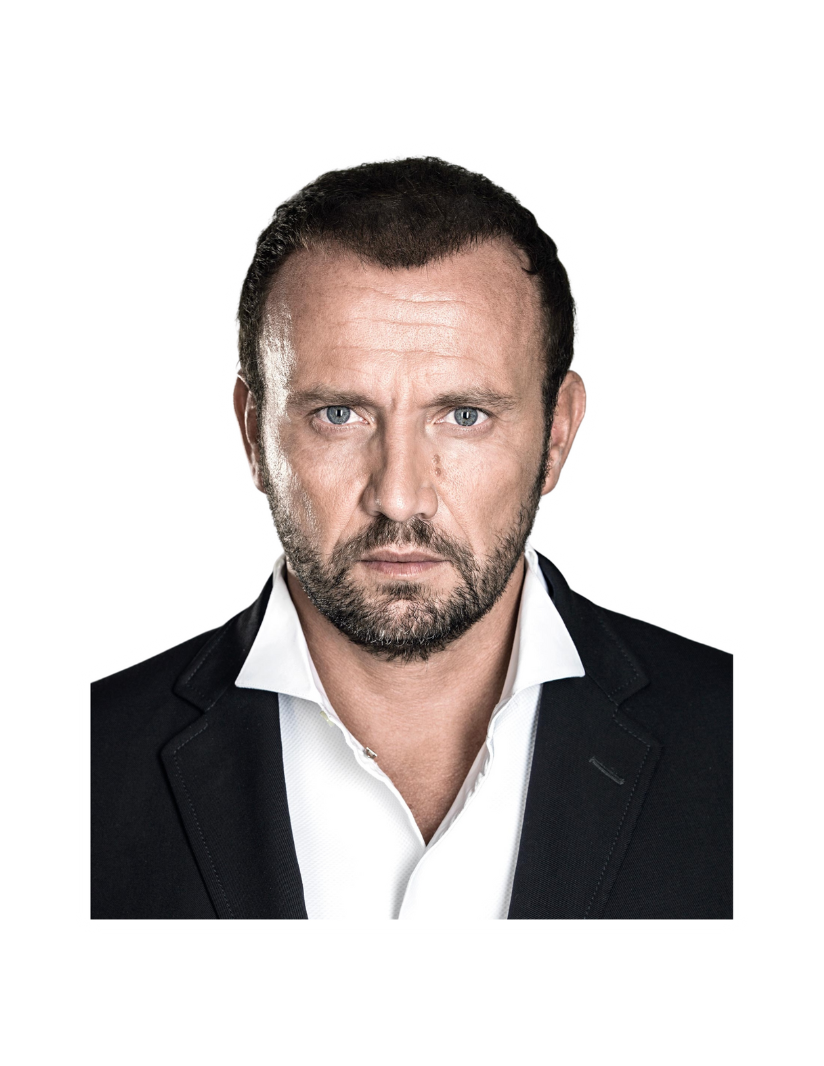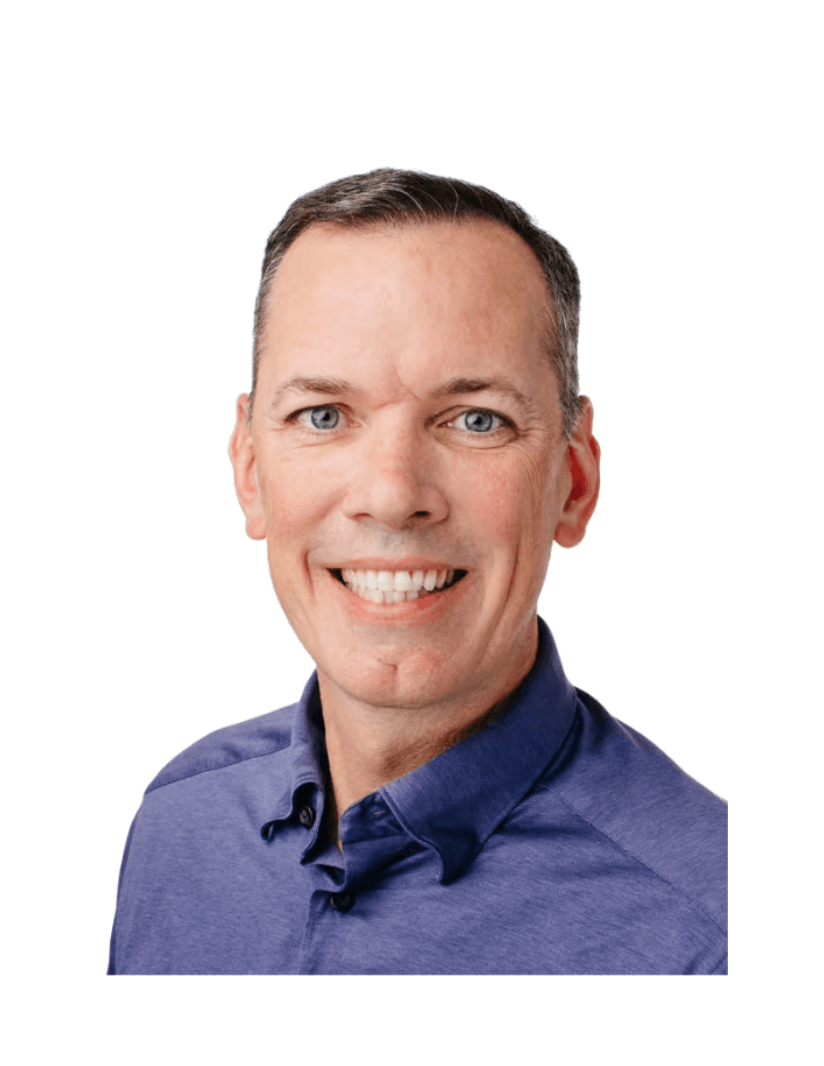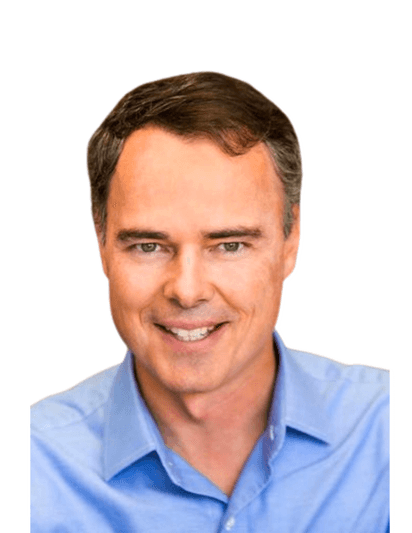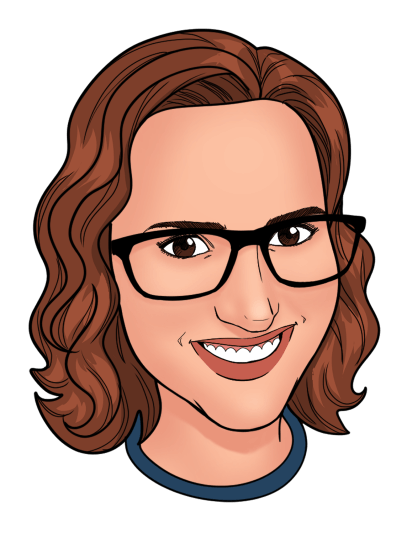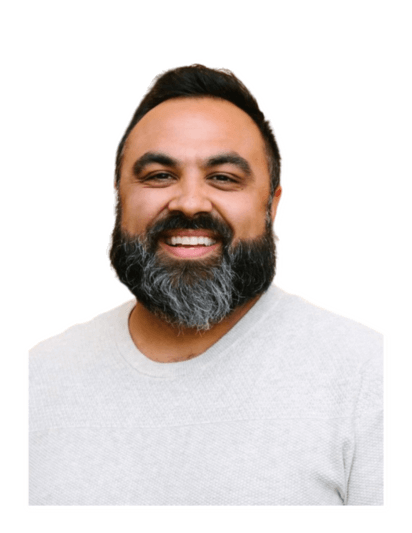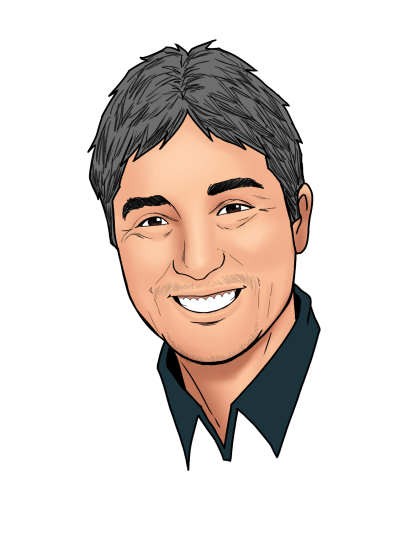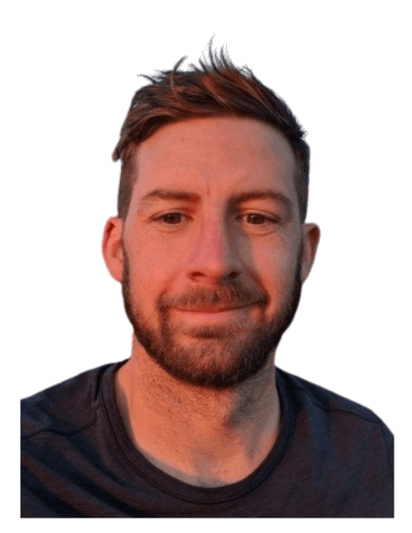
108

Episode 108 38 mins
Lessons from a Bootstrapped Startup: The Value of Team Building, Divergent Thinking, and Tiger Metrics
Zack Onisko, Chief Executive Officer at Dribbble
00:00
00:00

I think it is really critical for every person to have a one on one with their direct report every week. We also do all-hands weekly. We like to share work in progress with the team, every functional team gets a chance to share what they're working on and that really connects everyone from sales, to marketing to product design to support. Everyone knows where everyone's focus is throughout the organization.
In this episode
Trust your team to take things off your plate.
How do you do that?
By delegating, sharing your legos, and avoiding being a bottleneck.
Zack Onisko is the CEO of Dribbble, a community where designers share, grow, & get hired.
On episode 108, Zack talks about his transition from individual contributor to management and how to determine what to delegate.
Zack also shared his insights on the culture at Dribbble and his strategy for hiring senior experts.
Lastly, Zack shared his strategy for using tiger metrics, separating emotion from design, and divergent thinking.
Tune in to hear all about Zack’s leadership journey and the lessons learned along the way!
Like this episode? Be sure to leave a ⭐️⭐️⭐️⭐️⭐️ review and share the podcast with your colleagues.
03:30
Transition between IC and manager
09:04
Pre-pandemic remote culture-building
15:25
Hiring for functional expertise
18:26
Dribbble’s meeting culture
22:21
RICE and tiger metrics
25:16
Separating the emotion from design
30:27
Leveraging divergent thinking
36:59
Reading as a resource
Resources
Transcript
Aydin Mirzaee (Fellow.app) 00:25
Zack, welcome to the show.
Zack Onisko (Dribbble) 02:46
Thanks for having me.
Aydin Mirzaee (Fellow.app) 02:47
Yeah, of course, very excited to dig in, you know, today, you’re the CEO of Dribbble Dribbble is a brand that anyone who’s kind of in tech, even if they’re not design oriented, I think will have heard of, or come across, it’s a very big brand. And, you know, obviously you’ve been in the leadership world for a long time you were a companies like hired and branch out, and so on, so forth. And you’ve been investor and you know, live the startup life and a few different companies. So lots of stuff that we’re going to dig into. But one thing we like to do is start from the very beginning and ask you if you remember when you first started managing and leading teams, what were some of the early mistakes that you would have made in those early days?
Zack Onisko (Dribbble) 03:30
You know, I think the one that comes up over and over again, even as I manage new managers, right, is this transition between IC and management, this comes up over and over again, is just this idea of delegation, you know, in for an IC, you’re so used to just getting the job done yourself. And as you start to build a team underneath you, you know, you really have to start to share your Legos, and really trust that other people can get the job done for you. I think the moment people have is like, it always seems easier, faster and more efficient. I’m just getting this thing done myself and then we’ll move on to the next thing versus asking somebody for help. It’s that old proverb, you know, you give a man a fish and you feed him for a day, you teach him to fish and you feed him for a lifetime. That’s the one I think that stands out is and I went through this thing everyone goes through this, you know, when I took over Dribbble, even a CEO I still go through this right because I took over the company, we were just a team of eight and now we’re like 110 120 or something like that. So as I’ve hired you know, great leaders and managers and great ICs to build out this team. I’ve had to remove myself from being the the bottleneck on decision making on product development on marketing like all these things, and I just kind of trust the team you know to take this stuff off my plate and that frees me up with time to think more strategically think more big picture and and focus on you know other areas of the business and you know other functions of the role of do that, you know, I personally just enjoy spending more time on
Aydin Mirzaee (Fellow.app) 05:04
that makes a lot of sense. Wow, you started when I didn’t know that you were there that early in the company’s life. That’s awesome. I joined
Zack Onisko (Dribbble) 05:11
in 2017. So my story actually goes back to Well, I started as a designer God 25 years ago, and moved into product management and growth roles and kind of in different functions across boards, and finally into leadership roles. I joined a young YC company in 2012, as chief growth officer and my company’s Creative Market, we sold that business to Autodesk a couple of years later. And then in 2017, I joined Dribbble as CEO, and then to bring things full circle, we acquired credit market in 2020. So I’ve kind of been at this, you know, in this role for about a decade, even though, you know, my roles have changed, and the company has changed hands.
Aydin Mirzaee (Fellow.app) 05:51
That’s so cool that to buy back the company that you started and sold through another company. That’s amazing. One question that I have is, I mean, you probably have this sort of a dilemma all the time, right? So, yes, you’re helping new managers kind of, you know, learn the ropes and figure out how to delegate and how to feel productive through their teams versus necessarily through their own doing. One question I have have is how do you determine what you should delegate and what you shouldn’t? And like, when it makes sense to spin up the team or hire a person to help you with that? Like, how do you like think through that yourself, when you think about how you’re gonna spend your time. So it’s
Zack Onisko (Dribbble) 06:32
interesting. And so I think there’s a couple things. So one is like, just in terms of our philosophy for how we grow teams, so we’ve been bootstrapped company this whole time, we’ve grown to some considerable scale, independently. And so we’ve really taken a one a very high bar to hiring folks. And also just a very slow approach. So that old adage of, you know, hire slow fire fast is something that we, we try to stick to. And, you know, hiring is really, you know, in Silicon Valley, there’s a common thread of you meet somebody at a party and you talk about your startup, it’s like, well, how many employees are you and that’s always kind of a, a proxy for how much revenue you have, because no one shares the revenue as a private company, or what have you, or maybe you don’t have any revenue. But you know, for us, the number of employees we have is really, due to a failure on our part to be able to solve the problem we need solved. With the hands we have in C currently, right. So we really take this kind of critical approach to hiring. And then in terms of delegation and passing things off, like I said, when I took over Dribbble, we were eight people. So we’ve taken this approach to expanding the team kind of very slowly and methodically, the same thing with delegation, right? Like, it’s the roles we’re adding are roles that we can no longer do ourselves, or that we really want to bring in, you know, more seasoned expertise for a particular function. We know there’s a team that needs to be built. And so that team needs to be led by, you know, a seasoned manager. Because we’re fully remote, we have been for 13 years. And because we’re bootstrapped, we also tend to hire more senior people that we trust to kind of hit the ground running and really own their function.
Aydin Mirzaee (Fellow.app) 08:17
It’s refreshing to hear the way you put it, which is, you know, hiring more people is because it’s a failure to do the task or solve the problem with the current employees that we have on hand. And, you know, I agree, I mean, a lot of very, very even companies with you know, who sold for very large sums of money. They didn’t necessarily have a lot of employees, I think, is Instagram had 12 employees or so and sold for a billion and was it WhatsApp?
Zack Onisko (Dribbble) 08:41
Those are the famous ones. But that’s the power of virality. But
Aydin Mirzaee (Fellow.app) 08:43
yeah, so I guess like on the topic of remote work, since you mentioned that she you all have been remote from the very beginning, what is like the workplace culture, like at Dribbble, like, how would you define the way that you guys get worked on, in contrast to say, like what you’ve seen at other companies that you’ve worked at?
Zack Onisko (Dribbble) 09:04
So I think the ironic thing is that when I took over the business, you know, growing up in Silicon Valley, the wisdom was to go build out, you know, a hip office space in Oakland, because we’ll use that to attract talent. And, you know, we’ll have ping pong tables and foosball, you know, and all that. And, you know, we resist the urge, because we had some great remote employees. And we’re having a pretty easy time hiring some amazing talent remotely. And so and this is like, again, this is like to 2017 and the company has already been around for eight years since then remote this whole time, and so really leaned into that night, you know, formally coming from, you know, Creative Market, we had kind of a hybrid approach, but some of the most effective people in the team were the actual remote people. I had a year stent or joined a company called hired and we had, you know, big office space with 100 employees in the same building and Uber and square open format. and you go into that office like everyone’s wearing, like, Bose noise cancelling headphones. And you know, you just see people like, you know, in that environment, people struggle to get work done because people are shoulder tapping you and there’s constant distraction and interruptions. And so the remote thing, really, you know, I leaned into it, because I believe we can be more effective. And I also saw companies like, you know, WordPress and elastic, and, and GitHub, and folks like that successfully scale into like, hundreds, if not 1000s of employees, fully remote. So I knew it could be done. But I knew we had to take a very deliberate approach to connecting people as people, right. And I think that’s always the struggle with remote is that we have zoom, we have the bandwidth, we have the video conferencing technology, but there’s still nothing that really like connects like human interaction. So historically, what we did kind of pre pandemic. So we had a design conference, in the design conference, revenue, covered the, the T and E the expenses to fly the whole team and put them up in hotels for a week, we do this laptops down thing we hang out, we eat drink, we take, you know, duck boat tours, go on scavenger hunts kind of just how fun is people, then you kind of come back to the remote environment is more connected as individuals we haven’t done in a while. We want to get back to it as borders open up the curve split between US and Canada. I think the culture is something that we you know, in terms of my role as CEO, like what I focus a lot of my time and energy on is like, right, the mission, the vision, the strategic direction for the business, capital allocation, you know, the finance side of things, but then it’s like, people and you know, that’s kind of two parts. And one part is hirings, I still interview everyone who was hired on the team, personally. And then I also, you know, focus a lot on culture building, remotely. And we have somebody on staff who’s dedicated to culture, and we just do things that’s non work related to connect people, right. So this month, for example, every week in May, we did a fitness challenge, and there wasn’t a race or anything, it was just like, just take photos of you outside of your office outside of your home, on a trail on a bike on a skateboard, doing something in track, show us your, you know, exercise tracker, and then we get prizes, at the end of the week to whoever did you know ones like, who exercised in the most scenic area, who did the most creative exercise, you know, so, and that just builds engagement inside Slack. And inside of our, you know, kind of our working environment, we do other things like book clubs, when we do these kind of virtual games together. And it’s totally optional. But you know, those things do kind of when you’re connecting with other people outside of the actual work function, that’s when you start to build connection, and you start to build trust. And when that trust is there, people work more efficiently together. And it’s less political, it’s less, you know, the feeling of stepping on toes and that kind of awkwardness. And it just makes for a better, you know, culture for lack of better words. So yeah, it’s been a focus for, you know, since the very beginning, we’ve been very deliberate and just trying to build, you know, really great place to work here. Outside of like, having great perks and great salaries, and great and all the things that you kind of need for a job, you’re spending most of your waking hours with these people. How do you make that experience? more delightful?
Aydin Mirzaee (Fellow.app) 13:27
It makes a lot of sense. When you do go back to it. How are you thinking about the in person event? So it sounds like most people are in North America? Like are you thinking about in terms of having everybody get together once a year? Or is it multiple times a year? Or at least when you think about this? What is the frequency that allows you to have the team building? Like what kind of frequency allows for you to build really strong bonds that way?
Zack Onisko (Dribbble) 13:52
You know, I think just given the size of the team that we’ve built, the expenses associated have really started to climb, right. And so now it’s we’re looking at like, a quarter to a half a million dollar expense to bring some, you know, to have one of these week long events. Now that there’s value to this event. But I think what we’re probably looking at something more annually, I think, because our team is now split like 5050, US and Canada, like wherever you go becomes more agnostic, you know, we can we can travel to either country and go to a new country, we can go to Wyoming, go to Mexico. But I do think it’s important. I do think it is something that we want to invest in and something that I do you see the immediate results from that trip together. And again, we try to make it less like a lot of companies do offsites and they bring in guest lecturers and they make it all about work. And we really try to make it not about work. We tried to make it we’ll do a keynote, talk about the strategic direction of the next, you know, second half of the error or whatever, but then really tried to make it about fun and just connecting people during this trip.
Aydin Mirzaee (Fellow.app) 14:53
Yeah, I think that makes a lot of sense. I mean, as you get to really know each other as people as teams, that really kind of shines through and leads to better collaboration better working together. One thing that I did want to ask you, because you’re kind of talking about this, you know, before was you try and hire senior people as much as possible. I’m curious when you say senior people, how senior is senior? Like, does it depend on the role? Or, like, how do you determine how senior you need someone to be for function,
Zack Onisko (Dribbble) 15:25
when I say senior, I mean, like functional expertise. And so, these are people who can really, whether they’re IC, or whether they’re managers or or C suite, right, we really need people who can hit the ground running. And, and also, we’re still a startup, no matter what your role is, like, being able to wear multiple hats and being open to it. And also being open to rolling your sleeves up and getting your hands dirty from time to time when we don’t have the somebody to manage. Right. And that means managers actually, you know, kind of being player coaches, I think that’s an important part too, we have made mistakes in the past where we hire brand name, people from brand name companies, and they require brand, you know, brand name dollars associated with their salaries, and then they hit the ground, and they really don’t have that functional expertise anymore. And what they are, is really kind of professional delegators, you know, kind of delegate managing down, and then managing up, they’re not providing very much strategic value. And so I think in those cases, we hired somebody almost too senior, or at least to senior for a company our size. And so that’s when, you know, I think it doesn’t work out. But no, I mean, for the most part, we’re really looking for, you know, proactive, folks who are going to work remotely and work effectively, and who are functional experts and can just own their craft, and we can trust them to get the job done.
Aydin Mirzaee (Fellow.app) 16:46
That makes a lot of sense. I mean, it’s, do you find that when hiring more junior folks, this is a thing that comes up? Right? So a lot of people I mean, for the companies that went remote for the first time post pandemic, and they were, you know, forcibly remote. One of the things that was a common discussion point was that there are junior people suffered the most, because they were the ones that maybe got the most benefit from being inside an office, and it was easier to shadow other people and get up to speed. Would you agree with that? Or how do you think about that? No,
Zack Onisko (Dribbble) 17:20
100%, we’ve tried to hire Junior, we’ve tried internship programs, if we had the luxury to have a staff large enough that we had training built out if we had, you know, support programs, that the you know, provide that ramp you need as a junior person and getting that on the job training. I think it makes sense. But for us, we just haven’t had the luxury but because we’re bootstrapped, because we have to, you know, every person on the team has to be a contributor, you know, in their function and a love to get to a size one day where we can provide that, that training support, but we’re just not a large organization yet to be able to do that.
Aydin Mirzaee (Fellow.app) 18:01
Yeah, it makes sense. And you know, you guys have been remote for 13 years. So it’s validating to to also hear you say that, I am curious about one more thing on on remote culture. How do you think about your synchronous versus your asynchronous interactions and your for some folks, for example, the folks that do as they have almost no meetings at all that are synchronous. And I’m curious how you approach that and how you think about balancing the two, I think it all
Zack Onisko (Dribbble) 18:26
comes down to the way that people work, and every company is different. And for us were I would say we’re at this size, at least where we’re timezone sensitive, right. And so that online presence is really important for how we work today. And that may change, right 200 300 employees, maybe we do need to have, you know, there’s the North American team, there’s the Euro team, there’s the apex team, we’re not even thinking that far ahead yet, because we’re very centralized in North America, because of that, you know, kind of three hour timezone gap gives us enough overlap between teams to, no one gets blocks. We have hired people in Europe in the past, and it just didn’t work out when you know, somebody’s roadblocked for 24 hours before that person comes online, the other person is asleep, that the person is awake up to see the note. And so there is inefficiencies. If you’re working on two sides there now, there’s a team on North America. There’s a team in Europe, I can totally see how those can work well together. But I’m curious, the duelists I don’t know how they do it. But it’s fascinating. They could do that without meetings, but we we like to collaborate. We like to work as a team and so that that online presence is pretty important for how we work.
Aydin Mirzaee (Fellow.app) 19:43
You know, it’s interesting, the way that people take this approach is, you know, I think there are some things that most people agree with that things like status updates or things that don’t require collaboration should definitely be taken in an asynchronous format. But, you know, if you’re doing a one on one meeting, you know, with your direct reports, I mean that I think most people agree that that should be synchronous. And there’s a lot of benefit from that
Zack Onisko (Dribbble) 20:05
people need that. I think you can’t skip that either. And I don’t think you can just throw it in whatever tool you have, like you need that FaceTime with your manager. Otherwise, you go from this like a fish, the efficiencies of remote, you start to have remote islands where people feel really detached from the core business, they feel detached from their management, they’re not getting feedback, they’re not getting the support, they need to do good work. And so I think it is really critical, like every person or a company has a one on one with their director for every week. We also do all hands calls weekly, as well. And other you know, other companies will do monthly quarterly kind of big keynotes, we kind of put those into bite sized chunks. And we like to share work in progress with the team. But like every functional team gets a chance to share, you know, kind of what they’re working on. And that really connects everyone from sales, to marketing to product design to, you know, to support. everyone kind of knows where everyone’s focus throughout the organization.
Aydin Mirzaee (Fellow.app) 21:05
Hey there before moving to the next part of the interview, quick interjection to tell you about one of the internet’s best kept secrets, the manager TLDR newsletter. So every two weeks, we read the best content out there, the greatest articles, the advice, the case studies, whatever the latest and greatest is, we summarize it, and we send it to your inbox, we know you don’t have time to read everything. But because we’re doing the work, we’ll summarize it and send it to your inbox once every two weeks. And the best news is completely free. So go on over to fellow dot app slash newsletter, and sign up today. And with that said, let’s go back to the interview. I think that makes a lot of sense, I did want to dig into because you know, Dribbble the products is something that you know, has worldwide reach a lot of people use. And I think that we would all agree that in terms of design and building a really great product have really done great things. So I’m curious if we dig into the way that you think about your product and how you build it, there’s this framework that you’ve shared called the rice framework, I’d love for you to just dig in on that. And tell us maybe how you put that to work and how it results in the way that you put Dribbble the product together, or
Zack Onisko (Dribbble) 22:21
use the frameworks. So literally more than just a guide. And to help us kind of frame what’s important, you know, for a bootstrap company for the one I like to go to a lot is pirate metrics, which is you know, acquisition, activation retention for all revenue, but actually reverse it and call it Tiger metrics, or it’s like rawr. The acronym The Pirate Metrics is our this is like wrong. So anyway, because revenue is key, right? So you know that cash flow is critical to our success and sustainability. And so it really kind of take a revenue first approach to prioritization. And we think both short and long term, but through that kind of lens, is the right model in place, is there enough? Tam is there you know, because all these kinds of things kind of help us think through prioritization? That’s kind of the, you know, the rice framework is, what does it reach impact? Confidence effort, and there’s, there’s different ways people do it, they’ll do like a spreadsheet, it’s like, you know, how many people will it take to build this feature, what we think is going to be the desired impact, you know, there’s different ways you can mark the columns, you kind of sum up a score and helps prioritize, we don’t really go through that exercise very much these days, because it’s more kind of a instinctual almost, because you kind of see like, we’re not sure of good ideas. We have like, years and stuff we can build in, like so many good ideas, and our community is also awesome, and like shares, so many awesome ideas that we should build. And it really just comes down to like, what do we prioritize? And you know, what’s most important for the business? We’re building our mission for users? That’s kind of where that came from.
Aydin Mirzaee (Fellow.app) 24:02
Yeah, that’s very cool. I haven’t heard the, you know, reverse the our metrics and make them Tiger metrics. That’s pretty cool. And having a revenue first approach makes a lot of sense. My last company fellow is obviously venture backed, but my last company was bootstrapped. And so I can relate to a lot of the things that you’re saying. And we also, you know, it was all about revenue. Sometimes it was too much about revenue. I will say, like, we made some bad decisions in my last company that I wouldn’t repeat maybe
Zack Onisko (Dribbble) 24:29
gonna call it traffic, right? And so it was like, Okay, we have all this traffic, very low revenue. So how do we start focusing on the revenue so that we can, you know, do things like grow the team and invest in the product and build in, invest in analytics stacks and like, all the things that come with scaling up a business, it takes cash flow, and that’s, that’s why the priority is there, because we’re bootstrapped. We don’t have kind of that venture backed pressure to grow by, you know, all means necessary. So we do have a very very prudent approach to running the business. But I just wanted to interject there and share that part that, you know, we have this platform with all this crazy traffic. And it was kind of like what business models should we bring to the business to help? You know, monetize? Right?
Aydin Mirzaee (Fellow.app) 25:15
That makes a lot of sense. At the end of the day, I mean, that is the purpose of a business, one of the primary purposes and it makes sense to bring that into light, and then get everybody as you’re thinking about the product to really think, you know, how is this going to contribute? The other thing that you’ve talked about along the lines of product building is, you’ve said that design is an emotional profession, you lead with your heart, and you want to make these aesthetically beautiful designs for people, but sometimes those are not the most effective designs. So one question around this is, how do you get designers on your team to separate the emotion of design from their work? Or how do you think about those two things living together,
Zack Onisko (Dribbble) 25:56
I was a designer, right. And so coming up, as a designer, you’re designing for yourself a lot of ways, and there’s this weird, like, kind of when you’re in kindergarten, you’re drawing, and everyone’s an artist, and everyone’s creative, but this design is really designing for an outcome and designing for a purpose. And I think a lot of young designers either lack the experience to know what works, or they lack the strategic knowledge of the business. And I think, you know, at least in the last five years, you know, it’s been great to see more just the design function as a whole, become just more critical to, to business success, right. And I think that’s because, you know, as technology flattens the competitive landscape, the way that companies differentiate and win customers and retain their customers, is by building a better product and building a better user experience. And that is all situated in great design. Right? And so, you know, the emotion of design is really important, right? And but I think it’s like, it’s really the psychology of design that is critical. And, you know, it’s talking to an engineer, friend of mine. And he’s like, I don’t know what good design is, like, I can’t design great design. But I know that design when I see it. And I think that’s, maybe that’s where this quote was pulled, but I don’t I don’t remember where I said that quote. But I think that’s really important, right. And I think that, for me, as a designer, I was, you know, I freelance out of high school, I built a lot of mom and pop, you know, business websites. And then I went to design school, and I came out of school that I took a job at a fast growing startup spending like 1,000,002 million bucks a month and pay in the early 2000s. And we’re kind of everywhere, MSN and like New York Times, like, it’s like a while my work is getting out there in front of all these people. And the marketing team would come over, and like slam an Excel spreadsheet on my desk and like, stop doing these ones do more of these ones, right? And I’m like, Oh, what about these designs outperforming these other designers, you really start to think through beyond the aesthetics. I’m like, Oh, that one’s really beautiful. It’s you know, but maybe it’s too busy. And like the clarity of the call to action, or the clarity of the headline, then seeing what have you. So that’s important is that the design should have emotion, the design should like psychologically, the, you know, it should feel good to use the product, because that’s part of the design, right? There’s, I was talking my wife about this, like what’s, you know, about good design. And I’m like, well, there’s, we have this table that’s like handmade and crafted, like, imagine this, compared to like a table from Ikea, you’ll know which one is the better table because of the intuitive thought of how much work went into craft a thing and like how much care and how much passion and love was like making a thing and bringing it into this world. And I think that’s important for design, if it’s rushed, you can see like kind of a junior designers work because they don’t have the history or the experience to bring to their work to make it more polished and to make it more performance.
Aydin Mirzaee (Fellow.app) 28:58
I mean, that’s very interesting. So when hiring designers, what are things that you’ve learned that makes a great hire? Is there something that specifically that you see in a portfolio? Or, you know, how do you know if someone’s going to be a great hire for design? At this
Zack Onisko (Dribbble) 29:14
point, I’m not really the one in charge of screening designers or making the call to hire than we have. VP of design kind of makes all those calls. But normally, I think it’s, I think experience, right? And I think this goes for all functions in our org, we don’t have time to train, we don’t have time to investment experience. Unfortunately, it was just a luxury we don’t have. And so really finding folks who again, can hit the ground running just know our business, know our challenges, know our customers, and can kind of immediately kind of come into the fold and make an impact.
Aydin Mirzaee (Fellow.app) 29:48
It makes a lot of sense. There is another quote that we have from you and you can tell me if you remember this one, but you said it’s on divergent thinking which is the great way that designers solve problems is we tend to Think divergently great designers have the ability to think outside constraints of what’s already there scrap and come up with something completely new. So, I guess like when you think about this type of thinking, divergent versus convergent thinking, how does this line of thinking help you build a better business? Or how do you use it, you know, outside of just design, but using it in terms of, you know, figuring out where to take the company. Next, I saw
Zack Onisko (Dribbble) 30:27
that quote from the founder of IU. So I remember saying this one, so. But now I have a story related this one, that a former company that ran a big growth marketing team, and I had an outside agency hired to do conversion rate optimization. And every week, they’d send me a report. And every week, our homepage conversion rate can continue to go up. And like, this guy’s doing a great job, because, you know, I kind of left them alone to continue to do what they’re doing. And then one day that the head of sales comes over, and he’s like, What do you do on the homepage, like, my AES have to get on a call with every new client and explain what the hell we do as a business, right, and then you go to the homepage, they go, Well, of course, they’re getting increased conversion rate, because they’re just pulling all the marketing copy that are pulling all the like, attacks. And so like, by just making the thing more simple, they’re driving more conversions through the funnel, that’s an example of this, taking things away versus thinking about the actual problem in a different light. And so the design thinking, and this also comes at testing, you see this a lot, also, where, you know, a lot of flood folks go, like, let’s just change the copy a little bit, or let’s change the button color. And you know, and what you see is this little slight increase, maybe if you’re successful, but it’s really not meaningful, we really see the big, like, kind of statistical significant changes. And when you really try, try completely different page, a completely different marketing thought process, a different value proposition framing, right. And when you do something that dramatic, and that’s the design thing, that’s kind of really thinking outside of the box, and here’s the thing that already exists. And then we’re gonna go and test this against something that’s completely new, and drastically, dramatically different. And I think that’s when we see the biggest wins or biggest losses, maybe you get it wrong, and you know, the experimental blows up, but you’re bettering your, your chances for a home run, when you’re at bat, when you’re thinking like a designer, and you’re thinking through, you know, really zooming out and looking at the big picture versus like, is this button cut, you know, shouldn’t be joined now or get started, right? Like, maybe that makes a difference. But in the long run, it doesn’t, you know, it’s
Aydin Mirzaee (Fellow.app) 32:40
really interesting and hearing that from you, especially, because you, you know, just looking at your background, lots of growth roles. And so when I think about a lot of growth roles, at least, maybe this is my bias perception that I think that it is very iterative, and it is like move this button here, or, or make this small change. But it’s very interesting to hear you say that actually, a lot of the biggest innovations are from, you know, scrapping things and thinking maybe from first principle, and starting with something very different.
Zack Onisko (Dribbble) 33:10
My magic tool, like toolbox over the years has been this, this background and design. And early on in my career in the early 2000s. A lot of features and functionality was created in engineering back then. Startups are very engineering lead, right. And design was really came in after the feature was left the page was actually built, and they’re like, Hey, throw some good fonts and some graphics on this make it pretty, and we’ll ship it right in like, well, you know, and then as a designer, kinda like, what do you think through like how a user would interact with this? And like, you know, what about what happens in this outlier condition, you really think through all the different, you know, and so, that led me from a designer to move into product management, so that I can have more of a voice in those conversations, because it’s like, late 90s, early 2000s, where, you know, it was just a different time and different cultures where their products are built. And then, you know, from product management, it’s like, oh, well, part of that job was AV testing and, and how you win as a leader of product is making that product succeed and become a better version of it. And so that kind of led me more into this, you know, nomenclature that’s called growth or whatever it has, you know, it’s a function that has many names, but it’s really just like, how do you make a business perform. And that’s led me now a CEO role, where I do it at a much higher lens of the business and thinking through all the functions going in together is like an orchestrator versus, you know, my hands and an Optimizely or whatever.
Aydin Mirzaee (Fellow.app) 34:42
And when you think about the company on an overall basis, I’m curious if you have any stories of this concept of rather than doing something iteratively really maybe scrapping things and trying to, you know, very sort of divergent approach, whether it’s like org structure for the company, business model, or I like something on the company level where you have an example of trying something very different. And making the difference in that way,
Zack Onisko (Dribbble) 35:07
not anything Dribbble has been just one after another of pretty dramatic shifts and pivots and try new things. And we’ve done some pretty big experiments. And we’ve been lucky that a lot of them paid off. And some of them have been failures. And we had a sunset products and we made acquisitions, they had a sunset, because they didn’t work. And, you know, but by far and large, the biggest impacts we’ve had have been these big, new ideas that we really kind of invest in, to get a signal from our users to see if there’s a product market fit, to see if we have something that we can invest in further and continue to build up and optimize. Yeah, I mean, I think, you know, the founders, you know, in the early team, there was this inherent fear of changing anything on Dribbble, because we’re designing for designers, right, and there’s quite a bit of get to develop some thick skin for that job. Once I had the thick skin in place, then it was I felt more more confident in trying some big ideas and look, in the day, it’s a website, you could always change it. I think that’s one of the beautiful things designing for the Internet is that it all is temporary, and it changes, you know, Dribbble a year from now will look very different from German today.
Aydin Mirzaee (Fellow.app) 36:23
This is a really great way to encourage people to experiment and try new things and not be afraid of failing. Zack, this has been really awesome. We’ve talked about so many different things. We started with remote work and team building product roadmaps, your thoughts on design and divergent thinking. One question that we like to end with is for all the managers and leaders who are constantly looking to get better at their craft of managing and leading teams. Are there any final tips, tricks, resources, or just parting words of wisdom that you’d like to leave them with?
Zack Onisko (Dribbble) 36:59
I would say, read, and then just blog posts and tweets that like read books and listen to audio bowl, if you can sit down, read the actual physical book, go for walks, and just listen to the wisdom of other managers and other leaders. And I think whenever I get stuck in a place, I go, pick up a new book. And just even if I get into a couple of chapters, it really starts to get you to think differently and kind of think about reframing, you know, whatever challenger you’re focused in or, or if you’re just in need of some inspiration, right. There’s so many great leaders have shared their story and shared their their adventure in detail. And so there’s so much to pick up from that.
Aydin Mirzaee (Fellow.app) 37:41
That’s great advice and a great place ended Zack, thanks so much for doing this.
Latest episodes
-
Mauro Porcini, CDO at PepsiCo, Reveals the Traits Shaping the Unicorn Leadership Teams of the Future
Episode 2
Mauro Porcini
-
Joe Militello, Chief People Officer at Pagerduty: Why You Need to Rethink Your People Strategy
Episode 188
Joe Militello
-
Creating Cohesion: The Art of Connecting the Dots in Team Dynamics
Episode 181
Tonille Miller
Fellow Newsletter
Get exclusive interviews and leadership best practices directly into your inbox.
Wait! Before you go!
You might also be interested in these podcasts
-
Episode 130
From Zero to Scale: How to Pick a Market, Find the People and Build the Systems
Dave McJannet
CEO of HashiCorp
-
Episode 128
Strategic Thinking, Fire Fighting, and Balcony Moments: How To Make Time For It All
Hillery Hunter
CTO of IBM Cloud
-
Episode 17
The Culture Equation: How Value-Based Leadership Results in High-Performing and Loyal Teams
Bo Brabo
Former Director of HR at US Army and White House Communications Agency
-
Episode 30
The Asynchronous Approach: Remote Management Tips from a Digital Nomad
Cate Huston
Engineering Director of Mobile at DuckDuckGo
-
Episode 144
From Good to Great: Building a Winning Sales Team and Culture
Mike Manzi
Principal & Fractional VP at Official Sales
-
Episode 37
The Adventure of Leadership: Lessons Learned from Uncertainty and Discomfort
Jonathan Ronzio
CMO and Co-founder at Trainual
-
Episode 7
The Art of Being a Mensch
Guy Kawasaki
Chief Evangelist at Canva
-
Episode 123
Lessons from a 5x CTO: How to Retain Talent and Run Skip Level 1:1s Through Rapid Growth
Rob Zuber
Chief Technology Officer at CircleCI
-
Episode 137
The Backbone of a Successful Team: 1:1s, Skip Levels, and the Delegation Framework
Spencer Norman
VP of Engineering at Privy
